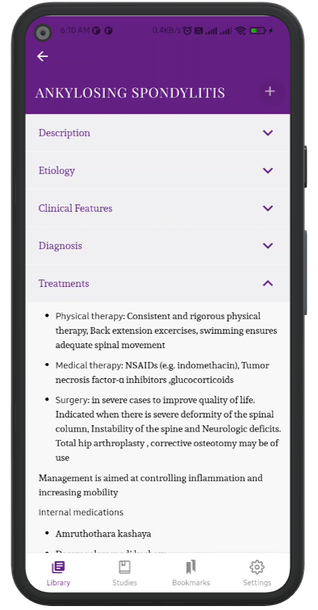URTICARIA
Description
- Urticaria is a dermal vascular reaction of the skin characterized by the appearance of itchy wheals, which are elevated pale or erythematous transient evanescent plaque lesions. The lesions usually do not last beyond 24 hours. Wheals itch, and the intensity of itch varies. A similar process may occur at mucosal surface of the upper respiratory tract or gastro intestinal tract
- Angioedema is closely related to urticaria and is characterized by deeper oedema of both dermis and subcutaneous fat
Types
- Lesions may vary from small pruritic papules to large edematous plaques. Individual lesions may coalesce to form annular linear or arciform configurations
- Different types of urticaria are all related, but they produce varying symptoms. Sometimes an individual may have more than one type
- Acute Urticaria: Acute urticaria usually becomes evident a few minutes after contact with the allergen. The reaction may last from a few hours to several weeks, but usually less than six weeks. Typically, the hives are evident only for a few days. Reactions as a result of food allergens typically cause the acute form of urticaria. Common foods that act as triggers are shellfish, nuts, eggs, fish, acid derivatives, and certain food dyes. Other allergens can be antibiotics, bee or wasp stings, or skin contact with certain fragrances
- It can occur with anaphylaxis – a severe allergic response leading to difficulty in breathing and possible death.
- Chronic Urticaria: Chronic urticaria is characterized by hives that appear daily or almost daily for at least six weeks or more. Visually, both acute and chronic forms of the disease are the same. The problem is that the chronic form can persist for a long time. More severe cases can last up to 20 or more years. An identifiable cause for the problem is rarely found (Idiopathic)
- Drug-Induced Urticaria: Drugs that have caused allergic reactions manifesting as urticaria include: aspirin, penicillin, sulfonamides, anticonvulsants, and anti-diabetic drugs such as sulphonylurea
- Dermatographism or Dermographism: Appearance of wheals or welts on the skin as a result of rubbing, scratching, or firm stroking of the skin. It is the most common form of physical urticaria. The skin reaction usually appears soon after the rubbing and disappears within 30minutes.
- Pressure or Delayed Pressure: Occur immediately after a pressure stimulus or as a delayed response to sustained pressure being applied to the skin. In the delayed form, the hives only appear after about six hours from the initial application of pressure to the skin. Generally, these hives are not the same as those found with most urticarias. Instead, the swelling in the affected areas is typically more diffuse. The hives may last from about 8 hours to three days.
- The source of the pressure on the skin can be from tight-fitting clothing, belts, bra straps, walking, leaning against an object, standing, sitting on a hard surface, etc. The areas of the body commonly affected are the hands, feet, trunk, buttocks, legs, and face. Cholinergic or Stress (Adrenergic) : Fairly common and occurs with exercise, sweating, or any activity that leads to a warming of the core body temperature such as warm or hot baths or showers. The hives that are produced are typically smaller than the classic hives
- Cold Hives appear on the skin areas that have been exposed to cold, damp, and windy conditions
- Heat: Develop within 2 to 5 minutes on the area of the skin that was exposed to heat. It is a rare form of urticaria and the disease is caused on areas of the skin that have been exposed to the sun. The skin condition becomes evident within minutes of sun exposure. After the individual is no longer exposed to the sun, the condition starts to fade within a few minutes to a few hours and rarely lasts longer than 24 hours.
- Water (Aquagenic): The appearance of hives is within 1 to 15 minutes of contact with the water and can last from 10 minutes to two hours
Differential Diagnosis
- Angio oedema: It involves SC or submucosal areas and margins of swelling are indistinct. Commonly involves swelling of lips, eyelids, larynx, pharynx. The swelling is painful but not pruritic
- Contact sensitivity - a vesicular eruption that progresses to chronic thickening of the skin with continued allergic exposure
- Atopic dermatitis
Investigation
- Rapid onset and self limiting nature of urticaria is a distinguishing feature
- Skin testing or assay for allergen specific IgE in serum
- CBC, DC, ESR
Treatments
Internal Medicines
- Amrutha vrisha patoladi kashaya
- Amruta rajanyadi kashaya
- Aragwadhaamruthadi kashaya
- Dooshee vishari gutika
- Avipathi choorna
- Sireesharishta
- Haridrakhanda
- Kaidaryadi kashaya
- Guda + ardraka swarasa
Procedures
- Guduchyadi kashaya dhara
- Neelidaladi kera – ext application
Department
Agada Tantra

